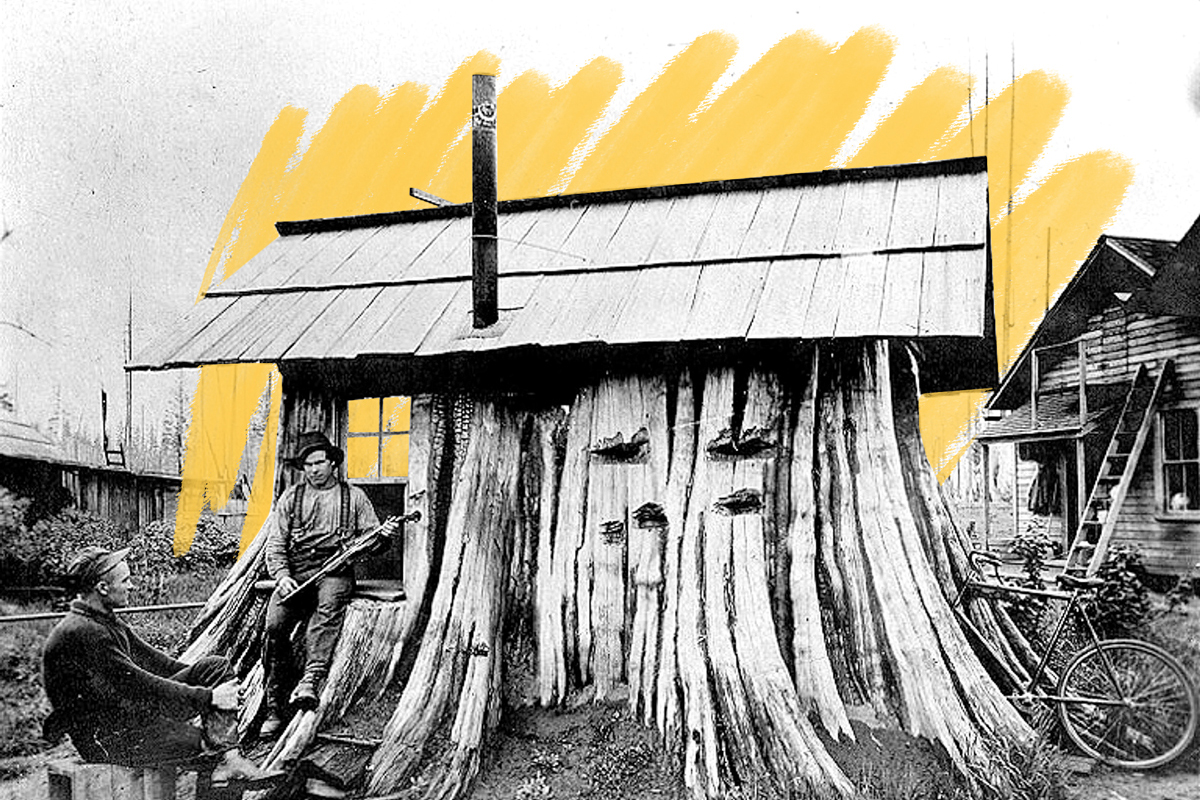In the 1800s, some Americans lived inside massive tree stumps.
Before the logging industry wiped out millions of wooded acres across the United States, the trees in old-growth forests were hundreds of feet tall, with gnarled bases and trunks that could measure more than 20 feet across. To fell the trees, loggers would build platforms 10 to 12 feet off the ground where the tree’s shape was smoother. So when settlers moved into the cleared forestland, they had a lot of giant stumps to contend with. Some stumps were removed, sometimes using perilous methods such as fire or dynamite. But others, particularly the larger ones, were repurposed.
The bases of these massive trees had soft wood interiors and sometimes even hollow areas, so it was relatively easy to carve out the center of a stump and turn it into a building, such as a barn, post office, or even the occasional home. The most famous of these stump houses was the Lennstrom Stump House in Edgecomb, Washington, crafted from a cedar stump 22 feet in diameter. Three adults and three children lived in the stump until they could build a larger house on their property. Unfortunately, the Lennstrom home was severely damaged in 1946. But in Arlington, Washington, just a few miles from Edgecomb, an extant 18-foot stump house is on display outside the Stillaguamish Valley Pioneer Museum.







